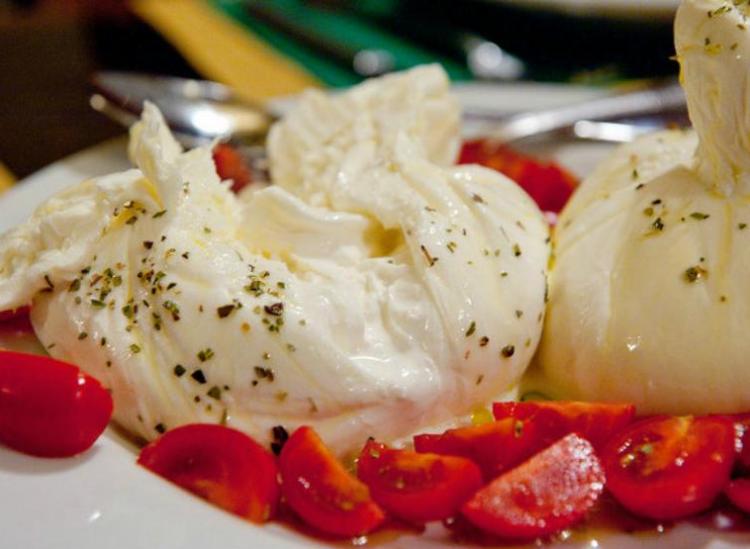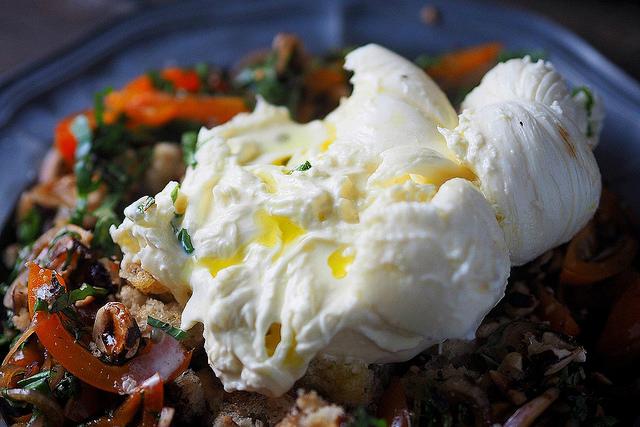Why Burrata Makes Everything Better

What does happiness taste like? The answer lies in a melt-in-your-mouth Italian cheese known as burrata (which translates to “buttered” in Italian). This is a dish and ingredient that both chefs and diners flock to. With a thin layer of mozzarella on the outside and scraps of mozzarella (called stracciatella) and fresh cream on the inside, this soft cheese has the power to take any menu to the next level. It can make just about any dish more decadent.
While Italians have been making mozzarella for hundreds of years, burrata came to the game much later. Born in the Puglia region of Italy around 1920, this delicate cheese didn’t make its way over to America until the 1990s. Since it’s so fresh, burrata is best eaten within a day of creation, before it even has the chance to age. Because of its rich and mild flavor, it has the ability to take on whatever flavors it’s served with, whether it’s drenched in a strong extra virgin olive oil and sprinkled with pepper and sea salt, resting on a fresh pizza pie, or melting on top of a piece of sweet French toast with fresh berries.

Flickr/Insatiablemunch/CC BY
If you buy burrata at the store, you can expect to spend around $10, or pay a tiny bit more at a restaurant. The most cost efficient way to enjoy this decadent cheese is to make it from scratch, although this might take you a few tries.
Slicing open a piece of burrata is right up there with breaking a poached egg. Nothing beats cutting into the pouch of fresh mozzarella and seeing its creamy center slowly ooze out. This is where a hearty piece of Italian bread comes in handy, to soak up every last bite. You can mix burrata into a salsa, add it to a salad, eat it alongside cured meats, toss it with pasta, make a grilled cheese, or just eat it on its own and pair it with a light wine like Sauvignon Blanc or Pinot Gris.
In conclusion, burrata can do no wrong.











